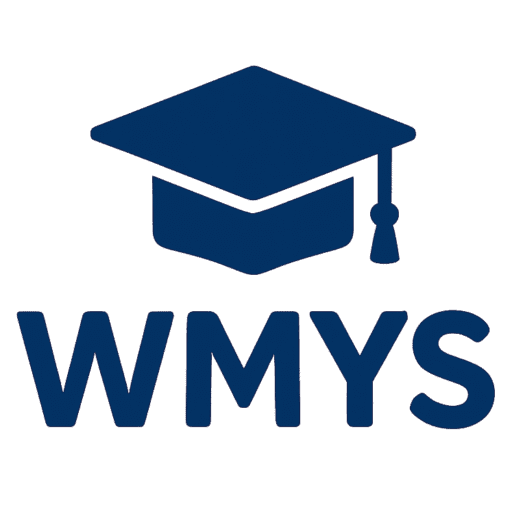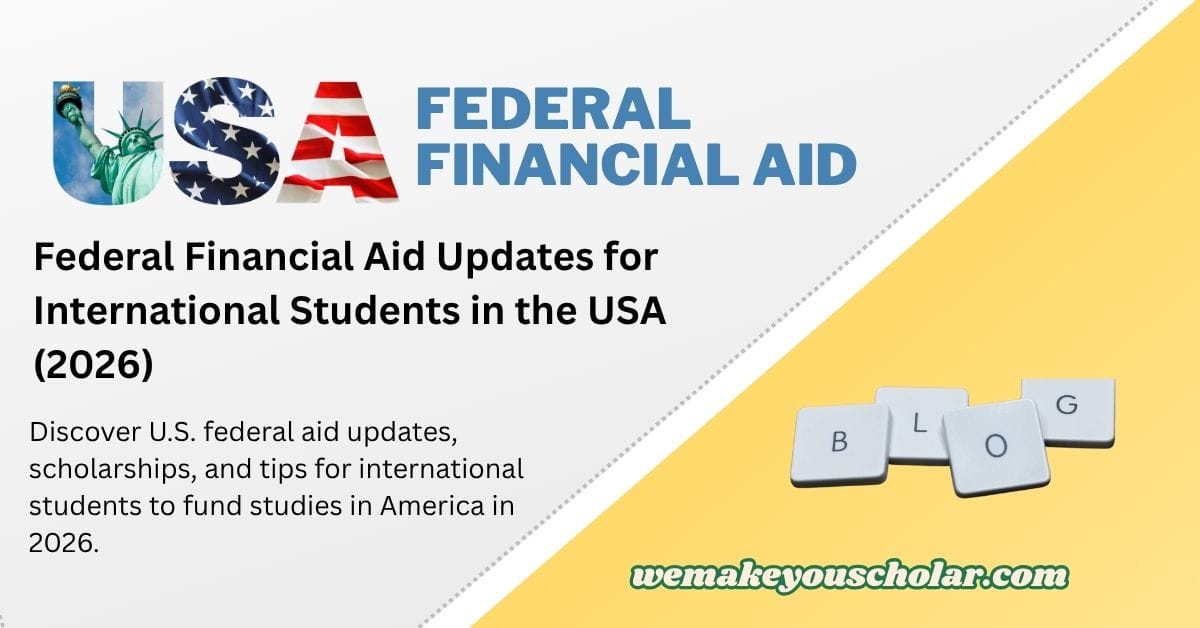Study in the USA: Federal Aid, Scholarships & Updates for International Students
Studying in the United States is a dream for many international students. But with high tuition, living expenses, and visa constraints, financial support becomes crucial. While many international students rely on scholarships offered by universities or private institutions, understanding the U.S. federal financial aid system and recent updates can help you gain more options—and avoid pitfalls.
In this guide, we’ll cover:
- How U.S. federal financial aid works (for eligible students)
- Recent updates and changes (2024–2026)
- Challenges international students face
- Strategies and tips to boost your chances
- Key resources, deadlines, and how institutions might help
- Action steps you should take right now
Understanding U.S. Federal Financial Aid (Basics & Terminology)
Federal financial aid refers to grants, loans, and work-study opportunities funded by the U.S. government, primarily through the Department of Education. These programs are governed under Title IV of the Higher Education Act of 1965.
- Grants — free money that doesn’t require repayment (e.g., Pell Grants)
- Federal student loans — loans with lower interest and flexible repayment
- Work-study — part-time campus jobs paid with federal funds
- Other programs — loan forgiveness, subsidized/unsubsidized loans
Most international students are ineligible, but understanding the system helps you explore exceptions and alternatives.
Why Federal Aid is Usually Blocked for International Students
The main restriction is that federal aid is limited to U.S. citizens, nationals, and “eligible noncitizens” (green card holders, refugees, parolees). This excludes most international students. However, a few options still exist:
- Eligible noncitizen status — permanent residents or special immigration statuses
- Institutional & state aid — offered directly by universities or state programs
- External scholarships — NGOs, governments, and private foundations
- Graduate assistantships — tuition waivers and stipends from departments
- International loans — private or cosigner loans
Recent Changes & Updates in U.S. Federal Financial Aid (2024–2026)
FAFSA Simplification
The FAFSA form has been simplified. For the 2026–27 cycle, students can invite contributors via email, verification is faster, and errors are reduced.
Stricter Identity Verification
Due to fraud concerns, new rules require photo ID or live video checks, especially for first-time applicants and those without SSNs.
Legislative Updates
The U.S. “One Big Beautiful Bill” (OBBB) is adjusting Pell Grant eligibility, capping Parent PLUS loans, and impacting aid formulas.
Administrative Disruptions
Technical delays, FAFSA outages, and reduced staffing at the Department of Education have slowed aid processing, emphasizing the need for early action.
Challenges International Students Face
- Ineligibility — most federal programs exclude international students.
- Documentation — lack of SSNs or U.S.-recognized IDs complicates verification.
- Deadlines — strict federal and institutional deadlines.
- Currency risk — exchange rates affect scholarship values.
- Lack of awareness — students often miss opportunities due to poor information flow.
Strategies to Increase Your Funding Chances
- Apply for institutional scholarships — many U.S. colleges offer aid specifically for international students.
- External scholarships — Fulbright, Chevening, DAAD, and other global programs.
- Graduate assistantships — teaching/research roles covering tuition and stipend.
- Private student loans — use with caution, check repayment terms carefully.
- Stay updated — subscribe to studentaid.gov for official updates.
Step-by-Step Timeline (2026–27 Cycle)
| Time | Action |
|---|---|
| 12–15 months before school start | Research universities, check their aid policies, and create a list of deadlines. |
| 9–12 months prior | Prepare test scores, transcripts, essays, and external scholarship applications. |
| 6–9 months prior | Gather financial documents, translations, notarizations, and prepare visa financial proofs. |
| When FAFSA/forms open | Submit FAFSA if eligible; apply for CSS Profile and institutional aid forms. |
| After admission offers | Compare aid packages, negotiate with schools, and finalize funding sources. |
Case Studies
Graduate Student with Full Assistantship: Maria from Brazil secured a full PhD assistantship covering tuition and stipend. She avoided FAFSA completely, showing how departments can be key for graduate aid.
Undergraduate Using Institutional Aid: Ahmed from Pakistan received merit aid and external scholarships at a U.S. liberal arts college. Institutional funding reduced his overall cost despite ineligibility for federal aid.
Student Facing FAFSA Restriction: Lina tried to complete FAFSA but was rejected. Instead, she used private scholarships and an international student loan with a U.S. cosigner.
Action Plan for International Students
- Check if you qualify as an eligible noncitizen.
- Make a list of target universities and compare their aid programs.
- Collect and translate financial documents early.
- Map scholarship and FAFSA deadlines in advance.
- Subscribe to updates from studentaid.gov and university financial aid offices.
- Apply broadly to institutional and external scholarships.
- Engage financial aid offices directly to explore waivers and flexibility.
Conclusion
While most international students cannot access U.S. federal grants or loans directly, opportunities still exist through institutional scholarships, assistantships, external grants, and private options. By preparing documents early, staying informed about FAFSA updates, and applying strategically, you can significantly reduce your financial burden and make your U.S. education dream a reality.
Official Link
For further details, please visit studentaid.gov. For more USA scholarships, please visit wemakeyouscholar.com.




